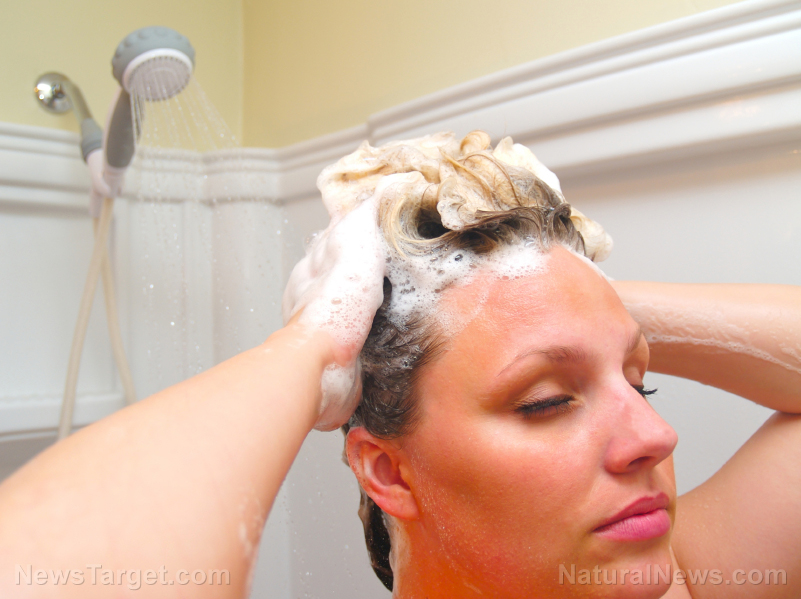Senators ask FDA to ban cancer-causing chemical from bath products
04/20/2017 / By Frances Bloomfield

Your shampoo could be harming you. The substance 1,4-dioxane, is a carcinogen that’s commonly found in personal care products that create suds, such as in shampoos, hand soaps, and shower gels. According to the Environmental Working Group, at least 8,000 products contain 1,4-dioxane. In spite of this, companies are not required by the U.S. Food and Drug Administration (FDA) to list it as an ingredient. This is because 1,4-dioxane is a contaminant that is created through ethoxylation, in which ethylene oxide—a breast carcinogen—is combined with other chemicals to make them less harsh. This reaction occurs during the manufacturing process, making 1,4-dioxane an unintentional byproduct in addition to being a contaminant.
The FDA encourages manufacturers to remove 1,4-dioxane, but this is not required by federal law. According to DailyMail.co.uk, New York Senators Charles Schumer and Kirsten Gillibrand are aiming to change this and are pushing for a nation-wide ban on 1,4-dioxane. “It’s time to drain 1,4-dioxane from everyday products,” Schumer has said.
The legislative petition by Schumer will ask the FDA to begin requiring manufacturers to remove the chemical from their products. In a statement, Schumer commented: “The fact that 1,4-dioxane, a potentially dangerous chemical, is hiding out in everyday products expected to make us clean is very disturbing, and to make matters worse, likely carcinogens like this one can be even more harmful to kids.” (Related: FDA Regulations Permit Toxins in Cosmetics)
Based on a recent survey by the Environmental Protection Agency (EPA), Schumer has also proposed that water providers conduct regular tests on the water supply in wells on Long Island and other areas of N.Y. “Consumers can’t identify it and most importantly, it ends up in our water supply,” the senator has said. Adrienne Esposito, Executive Director of the Citizens Campaign for the Environment, has stated that 1,4-dioxane can enter the water supply through “legacy manufacturing contamination and consumer personal-care products that get washed down the drain.”
Infants, teenagers, and pregnant women are the ones most vulnerable to the compound. Tests conducted on laboratory rats showed that the toxin can indeed cause cancer. Organizations like the EPA, the International Agency for Research on Cancer (IARC), and the U.S. Department of Health and Human Services (HHS) have labeled 1,4-dioxane as a human carcinogen.
Aside from the probability of cancer, Schumer has noted that the other long-term effects of 1,4-dioxane include liver and kidney damage. Studies performed on animals have shown that breathing 1,4-dioxane vapors can affect the nasal cavity. Even short-term exposure can dangerous as it can lead to nose, throat and eye irritation.
With these effects in mind, you need to be more careful of all your future bath product purchases. There may be no label for 1,4-dioxane, but you can read the label for other ingredients. According to SafeCosmetics.org, the names that you should look out for are “sodium laureth sulfate, PEG compounds, chemicals that include the clauses xynol, ceteareth and oleth.”
Choosing organic alternatives to common branded bath products is perhaps the safest way to avoid exposure to 1,4-dioxane. There exists a good number of organic personal care products that aren’t made with questionable chemicals or created through harmful manufacturing procedures. Many products available on the market contain small doses of 1,4-dioxane, notes the Agency for Toxic Substances & Disease Registry. So if you really want to avoid any and all contact with 1,4-dioxane, you have to be a more cautious and prudent consumer.
You can learn more about toxins and other dangerous chemicals by visiting HeavyMetals.news and Toxins.news.
Sources:
DailyMail.co.uk
NewsDay.com
SafeCosmetics.org
ATSDR.cdc.gov
Tagged Under: 1-4-dioxane, 14dioxane, bath products, carcinogens, FDA
RECENT NEWS & ARTICLES
COPYRIGHT © 2017 ENVIRON NEWS




















